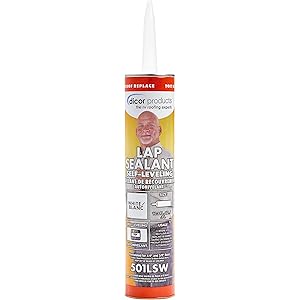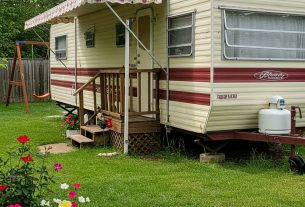As someone who has often pondered the challenges of affordable housing, I find myself drawn to the myriad of alternatives to mobile homes. Although mobile homes offer some benefits, there are other creative and affordable housing options available that can cater to a variety of lifestyles and budgets. In this article, I’m excited to share insights into these alternatives, their unique features, and how they can be a solution to our housing woes.
Understanding the Need for Affordable Housing
The conversation around affordable housing has never been more pressing. With rising costs of living and stagnant wages, many people find themselves priced out of traditional housing markets. According to the National Low Income Housing Coalition, there is a shortage of 7 million affordable rental homes available to extremely low-income renters. This statistic underscores the urgency of exploring alternatives to mobile homes and other conventional housing options.
What Are the Alternatives?
When considering alternatives to mobile homes, we can explore various innovative housing solutions that are not only budget-friendly but also sustainable and often customizable. Below, I will delve into some of the most popular options, detailing their features and benefits.
Tiny Houses: A Growing Trend
Tiny houses have gained significant popularity over the past decade, embodying the essence of minimalism and efficient living. These compact homes typically range from 100 to 400 square feet and are designed to maximize space and functionality.
- Affordability: The average tiny house costs between $20,000 and $50,000, making them an attractive option for many.
- Eco-friendly: Many tiny houses are built with sustainable materials and incorporate energy-efficient designs.
- Flexibility: Tiny houses can be built on trailers for mobility or on foundations for permanence.
- Community: Tiny house villages are emerging, offering a sense of community and shared resources.
For instance, the Tiny House Movement has inspired numerous individuals to downsize and live more intentionally. A case study from a tiny house village in Oregon shows that residents report higher levels of satisfaction and community engagement compared to traditional neighborhoods.
Container Homes: Shipping to Sustainability
Container homes are another innovative alternative that has garnered attention. These homes are built using repurposed shipping containers, making them both cost-effective and environmentally friendly.
- Cost-effective: Container homes can be constructed for as little as $10,000, depending on the design and location.
- Durable: Shipping containers are built to withstand harsh conditions, making them incredibly durable.
- Customizable: They can be easily modified to fit various design preferences and living needs.
- Rapid construction: Container homes can be assembled much faster than traditional homes.
In a study conducted by the Container Housing Coalition, it was found that container homes can reduce construction time by up to 50% compared to conventional building methods.
Prefabricated Homes: Built for Efficiency
Prefabricated homes, or prefab homes, are constructed off-site and then transported to the desired location. This method can significantly reduce construction time and costs.
- Faster construction: Prefab homes can be built in a matter of weeks rather than months.
- Quality control: Building in a factory setting allows for better quality assurance.
- Energy efficiency: Many prefab homes are designed with energy-efficient materials and systems.
- Variety: There are many styles and designs available, catering to different tastes and needs.
For example, a report from the National Association of Home Builders indicates that prefab homes can save homeowners up to 20% in construction costs, making them an attractive option for those seeking affordability.
Earthships: Sustainable Living at Its Best
Earthships are an innovative type of sustainable housing that utilizes natural and recycled materials, focusing on self-sufficiency. These homes are designed to be off-grid, using solar energy, rainwater harvesting, and waste recycling systems.
- Eco-friendly: Earthships are built using natural and recycled materials, significantly reducing their environmental impact.
- Self-sufficient: They are designed to function independently from municipal utilities.
- Resilient: Earthships can withstand extreme weather conditions due to their thermal mass and insulation properties.
- Community-driven: Many Earthship communities are forming, focusing on sustainability and shared values.
A remarkable case study in Taos, New Mexico, highlights a thriving Earthship community where residents report lower utility costs and a deep sense of connection to the environment.
Co-Housing: Shared Living for Modern Times
Co-housing is a model that combines private living spaces with shared communal areas. This option fosters community and collaboration among residents, making it a viable alternative to traditional housing.
- Community-focused: Co-housing encourages social interaction and support among residents.
- Cost-sharing: Shared resources can lead to overall savings on living expenses.
- Customizable: Residents often participate in the design and management of their community.
- Environmental benefits: Many co-housing communities prioritize sustainability in their construction and living practices.
In a case study from a co-housing community in California, residents reported improved mental health and well-being, emphasizing the importance of social connections in our lives.
Financial Considerations: Making the Right Choice
When exploring alternatives to mobile homes, it’s crucial to consider the financial implications of each option. Below are some factors to keep in mind:
- Initial Costs: Understand the upfront costs associated with each housing type, including land, construction, and permits.
- Financing Options: Research available financing options, including loans specifically for alternative housing.
- Long-term Sustainability: Consider ongoing costs such as utilities, maintenance, and property taxes.
- Resale Value: Investigate the potential resale value of your chosen housing option.
By conducting thorough research and evaluating these financial aspects, you can make an informed decision that aligns with your budget and lifestyle.
Overcoming Challenges: Zoning and Regulations
One of the significant barriers to adopting alternative housing solutions is navigating zoning laws and building regulations. Here are some steps to consider:
- Research Local Laws: Familiarize yourself with local zoning laws and building codes that may affect alternative housing options.
- Advocate for Change: Join local housing advocacy groups to promote policy changes that support alternative housing.
- Connect with Professionals: Work with architects and builders who have experience with alternative housing to ensure compliance with regulations.
- Be Prepared: Understand that building alternative housing may require more time and effort due to regulatory hurdles.
By staying informed and proactive, we can contribute to creating an environment that supports innovative housing solutions.
Join the Conversation: Share Your Thoughts!
As we explore these alternatives to mobile homes, I encourage you to share your thoughts and experiences. Have you considered any of these housing options? What challenges have you faced? Join the conversation in the comments below!
Conclusion: Embracing Innovative Housing Solutions
In conclusion, the housing crisis calls for creative solutions beyond traditional mobile homes. From tiny houses and container homes to earthships and co-housing, there are numerous alternatives that can provide affordable, sustainable, and community-focused living options. By understanding the benefits and challenges of each alternative, we can make informed decisions and advocate for policies that support innovative housing solutions.
As we continue this important conversation about affordable housing, I invite you to sign up for our newsletter for the latest insights and updates. Don’t forget to share this article with friends and on social media to spread the word about the possibilities for affordable living!
FAQ
What is the average cost of a tiny house?
The average cost of a tiny house ranges from $20,000 to $50,000, depending on size and amenities.
Are container homes safe to live in?
Yes, container homes are safe when properly designed and constructed, meeting building codes and regulations.
How long does it take to build a prefabricated home?
Prefab homes can typically be built in a matter of weeks, significantly faster than traditional construction.
What are the benefits of co-housing?
Co-housing promotes community, cost-sharing, and sustainable living practices, making it a unique housing alternative.
Dicor 501LSW-1 HAPS-Free Self-Leveling Lap Sealant for horizontal surfaces - 10.3 Oz, White, Secure, Ideal for RV Roofing, Maintenance, Repair, Appliance Application
$16.29 (as of October 8, 2025 06:39 GMT -03:00 - More infoProduct prices and availability are accurate as of the date/time indicated and are subject to change. Any price and availability information displayed on [relevant Amazon Site(s), as applicable] at the time of purchase will apply to the purchase of this product.)
Sign up for our newsletter and stay up to date with exclusive news
that can transform your routine!





